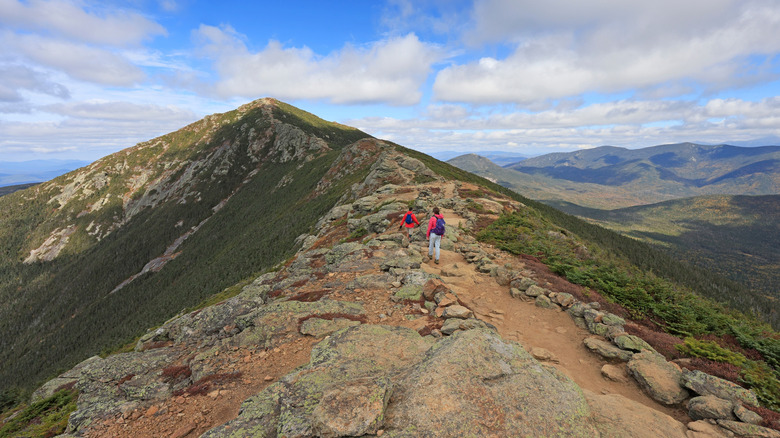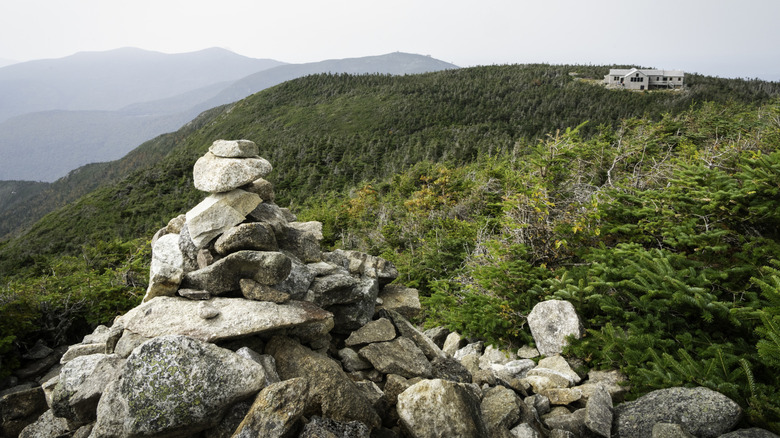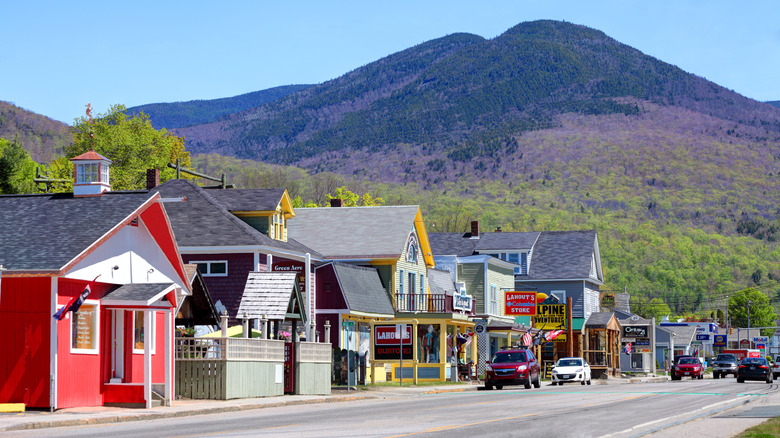
If you're looking for a trip chock-full of scenic views in America's safest state, look no further than the Franconia Ridge Mountain Range in New Hampshire's White Mountains. The area is home to several scenic trails and mountaintops, but Franconia Ridge's Mount Lincoln, the range's second highest peak, is an otherworldly climb and a hiker's paradise.
Located south of Mount Lafayette and north of Little Haystack, at its peak, Mount Lincoln towers over 5000 feet in the air. It offers year-round opportunities
for hiking and climbing, and, as an integral part of the 800,000-acre White Mountain National Forest, the impressive mountain and the land surrounding it remain undeveloped and open to outdoor adventurers.
The Franconia Ridge Trail is one of New Hampshire's most highly regarded hiking attractions. The route along the expansive trail in Franconia Notch leads visitors to Mount Lincoln and two other mountains, Mount Lafayette and Little Haystack Mountain. And since Mount Lincoln resides in a state park, you can say goodbye to red tape and leave your wallet in the car. No payment is required to enjoy this view of New Hampshire's majestic White Mountains; just bring your hiking boots and head down one of the trailheads in the parking lot to start your adventure.
Read more: The Best Vacation Destinations Where The US Dollar Goes Furthest
The Paths Most Traveled

Once you arrive at the White Mountains, there are multiple ways to hike Mount Lincoln, depending on how far you want to go and what views interest you the most. Old Bridle Path is part of the full Franconia loop and provides one of the best and clearest routes to Mount Lincoln. The climb is moderately challenging at a total of 8.8 miles and an elevation of 5260 feet. If you take Old Bridle Path, make sure you carve out a full day, as, on average, this hike takes around 7 and a half hours to complete.
Though this trail is somewhat fierce, hikers get two for the price of one, as both Mount Lincoln and Mount Lafayette are reachable along the way. Plus, Greenleaf Hut sits just three miles into the hike, providing full-service accommodations and dining from June through October and self-service from May to June.
The other leg of the Franconia Loop, the Falling Waters Trail, leads hikers along a flowing stream and several impressive waterfalls, hence the trail's name. A 2-hour round-trip hike spanning 2.6 miles, Falling Waters Trail is one of the most popular hikes in the White Mountains, so don't be surprised to find yourself passing by other groups of hikers, especially when the weather is decent. The picturesque 80-foot Cloudland Falls make the journey and potential masses worth it and are visible just a half-mile from the start of the trail.
The Way To The Climb

If Mount Lincoln sounds like the ideal place for your next hike, getting there is fairly easy. To get to the White Mountains from the north, just follow I-93 to US 3 to Franconia Notch. From the south, take I-93 into New Hampshire and take the exit north of Woodstock that reads Mount Lafayette Campground. When you've arrived, look for trailheads signaling either direction of the trail in the parking lot. To get to north-central New Hampshire, and eventually Mount Lincoln, there are multiple airports you can fly into first. The Manchester Boston Regional Airport is the closest to the White Mountains at less than a two-hour drive; Boston Logan International Airport is roughly 45 minutes further away.
If you're looking for more unique hiking trails and outdoor fun before you leave the White Mountain State, check out the Appalachian Mountain Club for food, shelter, and camaraderie. And if you're in need of a place to hang your hat after your hike, there are plenty of accommodations available in the surrounding area, from camping at Lafayette Place to the stunning Omni Mount Washington Resort and Spa to staying in nearby Sugar Hill, a small town that happens to feature some impressive dining options.
Mount Lincoln welcomes hikers all year, but keep the weather in mind before you go. Franconia Ridge gets crowded over the summer, and when you're in such high altitudes, remember to bring plenty of sunscreen and water. No matter what time of year you're hiking, make sure someone knows when you're leaving and coming back and always pack all of the necessary gear.
Ready to discover more hidden gems and expert travel tips? Subscribe to our free newsletter for access to the world's best-kept travel secrets.
Read the original article on Islands.











